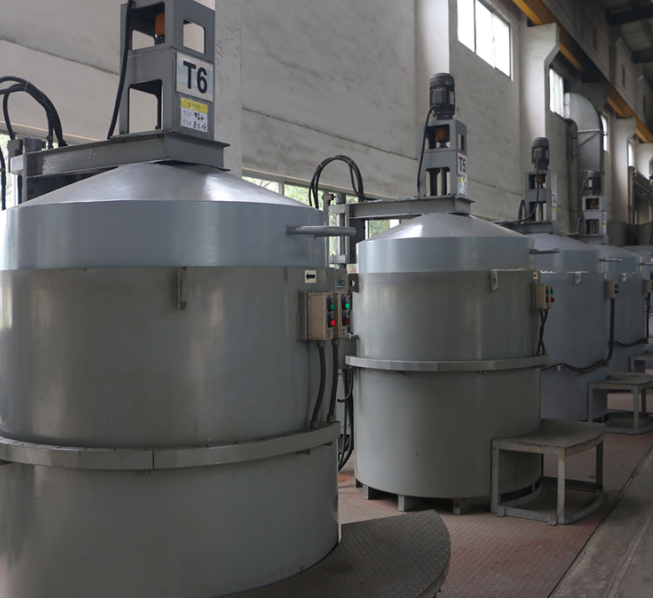Hello, welcome to Guangdong Heyi Hardware Products Co.,Ltd. website!
Hello, welcome to Guangdong Heyi Hardware Products Co.,Ltd. website!
Die-casting mould surface treatment technology requirements are very high, in recent years a variety of die-casting mould surface treatment of new technologies continue to emerge, but in general can be divided into the following three categories.
First is the improvement of the heat treatment process of the traditional technology.
Second, surface modification technology, including surface thermal expansion infiltration treatment, surface phase change reinforcement, EDM reinforcement technology, etc.
Third, coating technology, including chemical coating, etc.
Traditional heat treatment process improvement technology
The traditional heat treatment processes for die casting moulds are quenching and tempering, with surface treatment techniques being a later development. As they can be used as die casting moulds for a variety of materials, the same surface treatment techniques and processes will produce different results for different materials.
Another direction of development for improving heat treatment technology is to combine traditional heat treatment processes with advanced surface treatment processes to improve the service life of die-casting moulds.
Such as the use of carbon and nitrogen infiltration of chemical heat treatment methods, and conventional quenching, tempering process combined with NQN (i.e. carbon and nitrogen infiltration - quenching - carbon and nitrogen infiltration) composite reinforcement, not only increases the higher surface hardness and effective hardening layer depth, penetration layer hardness gradient distribution is reasonable, tempering stability and corrosion resistance, so that the surface quality and performance of the die casting die has been greatly improved, while achieving a good core performance.

Surface Improvement Technology - Surface Thermal Diffusion Technology
This type of surface thermal diffusion technology includes carburising, nitriding, boron penetration as well as carbonitriding and sulphur-carbonitriding.
1、Carburising and carbonitriding
The carburising process is used in cold, hot work and plastic mould surface strengthening, all of which can improve the life of the mould. Carburizing treatment, the main process methods are solid powder carburizing, gas carburizing, as well as vacuum carburizing, ion carburizing and carburizing atmosphere with the addition of nitrogen to form the carbon and nitrogen carburizing.
Among them, vacuum carburizing and ion carburizing is the technology developed in the past 20 years, the technology has fast carburizing speed, uniform carburizing layer, carbon concentration gradient and small deformation of the workpiece, etc., will play an increasingly important role in the mold surface, especially precision mold surface treatment.
2, nitriding and related low-temperature heat expansion penetration technology
This type includes nitriding, ion nitriding, carbon nitriding, oxygen nitriding, sulfur nitriding and sulfur-carbon nitriding, oxygen-nitrogen-sulfur three-year co-infiltration and other methods.
These methods are simple, adaptable, low expansion infiltration temperature (generally 480 ~ 600 ℃), small workpiece deformation, especially for precision mold surface strengthening, and high hardness of the nitride layer, good wear resistance, good anti-sticky mold performance.
3、Boriding
Due to the high hardness of the boron layer (FeB: HV1800 ~ 2300, Fe2B: HV1300 ~ 1500), wear resistance and red hardness, as well as a certain degree of corrosion resistance and anti-adhesion, boron technology in the mold industry to obtain a better application effect.
But because the die-casting die working conditions are very harsh, so boron infiltration process is less applied to die-casting die surface treatment, but in recent years, there are improved boron infiltration method, solve the above problems, and can be applied to die-casting die surface treatment.
Such as multiple, coated powder infiltration. The method of coating powder boron infiltration is to mix boron compounds and other infiltrating agents and then coated on the surface of the die-casting mould, to be liquid evaporation, and then according to the general powder boron infiltration method box seal, 920 ℃ heating and insulation 8h, followed by air cooling.
This method can obtain dense, uniform seepage layer, die surface seepage layer hardness, wear resistance and bending strength have been improved, the average life of the die increased by more than 2 times.
4、Rare earth surface strengthening
In recent years, in the mold surface strengthening using the method of adding rare earth elements is widely respected. This is because the rare earth elements have a variety of functions to improve the percolation speed, strengthen the surface and purify the surface wear-resistant welding rod, it is to improve the mold surface structure, surface physical, chemical and mechanical properties have a great impact, can improve the percolation speed, strengthen the surface, generate rare earth compounds.
At the same time can eliminate the distribution of trace impurities on the grain boundary of the harmful effects, play a role in strengthening and stabilizing the mold cavity surface grain boundary. In addition, rare-earth elements and harmful elements in the steel to generate high melting point compounds, and can inhibit these harmful elements in the grain boundaries on the bias, thereby reducing the deep brittleness, etc..
In the die-casting mould surface strengthening process to add rare earth element components, can significantly improve a variety of infiltration method of permeation layer thickness, improve the surface hardness, while making the permeation layer organization fine dispersion, hardness gradient down, so that the mould wear resistance, resistance to cold, thermal fatigue performance, etc. significantly improved, thus significantly improving the life of the mould.
Currently applied to die-casting mold cavity surface treatment methods are: rare-earth carbon seepage, rare-earth carbon and nitrogen seepage, rare-earth boron seepage, rare-earth boron and aluminum seepage, rare-earth soft nitriding, rare-earth sulfur, nitrogen and carbon seepage, etc.
Laser surface treatment
Laser surface treatment is the use of laser beam heating, so that the surface of the workpiece quickly melt a certain depth of thin layer, while the use of vacuum vapour plating, electroplating, ion injection and other methods of alloying elements coated on the surface of the workpiece, under the laser irradiation to make it fully integrated with the base metal, condensation in the mould surface to obtain a thickness of 10 ~ 1000μm with special properties of the alloy layer, the cooling rate is equivalent to the quenching of the cooling.
If the surface of H13 mould steel is treated by laser rapid melting process, the melt zone has high hardness and good thermal stability, high resistance to plastic deformation, and has a significant inhibiting effect on the emergence and expansion of fatigue cracks.
Plating technology
Plating technology, as a kind of mould strengthening technology, is mainly used in plastic moulds, glass moulds, rubber moulds, stamping moulds and other moulds with a relatively simple working environment for surface treatment. Die casting moulds need to withstand the harsh environment of alternating hot and cold stresses, so generally do not use coating technology to strengthen the surface of die casting moulds.
However, in recent years, there have been reports of the use of chemical compound plating to strengthen the surface of die casting moulds in order to improve the mould surface resistance to adhesion and demoulding. The method in the aluminium-based die-casting die will be PTFE particles infiltration after (NiP) - PTFE composite plating.
Experiments have proven that this method is feasible in terms of process and performance, and greatly reduces the friction coefficient of the mould surface.
Mould pressure processing is an important part of mechanical engineering, and the level, quality and life of moulds are closely related to mould surface strengthening technology. With the progress of science and technology, in recent years a variety of mould surface treatment technology to appear larger progress. Performance in.
1, the traditional heat treatment process improvement and its combination with other new technology.
2, surface modification technology, including carburizing, low-temperature thermal expansion infiltration (a variety of nitriding, carbonitriding, ion nitriding, ternary co-infiltration, etc.), salt bath thermal expansion infiltration, boron infiltration, rare earth surface strengthening, laser surface treatment and EDM deposition of metal ceramics, etc..
3, coating technology and other aspects, but for the extremely harsh working conditions of the die-casting die, the existing new surface treatment process can not meet the growing requirements, can be expected more advanced technology, is also expected to be applied to the surface treatment of die-casting die.
In view of the surface treatment is to improve the die-casting die life of one of the important means, so to improve China's die-casting die production overall level, surface treatment technology will play a pivotal role.
4000-115-666
Email:mojugang@gdheyi.cn
Address:No. 8, Xinwei North Lane, Fugang, Qingxi,
Dongguan City, Guangdong Province
 Mobile website
Mobile website
 Follow the public
Follow the public